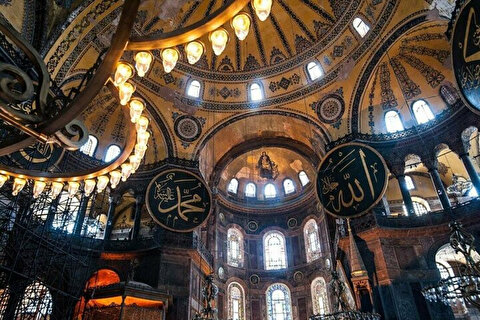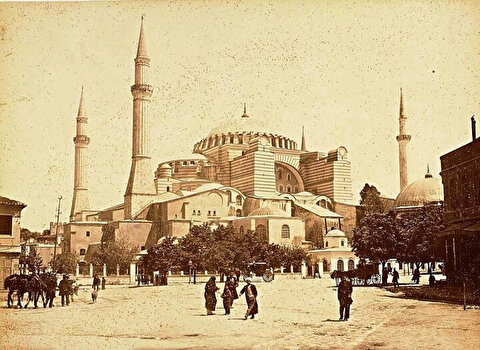
According to Byzantine sources, when the city was recaptured after the Crusader invasion, Dandolo’s body was dropped into the deep blue sea in an act of revenge
In a thrilling new documentary, the 800-year-old veil of secrets shrouding the tomb of notorious and greedy Fourth Crusade commander and Venetian Doge Enrico Dandolo in Turkey’s landmark Hagia Sophia has been lifted.
Hagia Sophia served as a church for 916 years until the conquest of Istanbul, and a mosque from 1453 to 1934 – nearly 500 years – was re-converted into a place of Muslim worship on July 24. Since then, the secrets its ancient walls hold have been coming to light- one by one.

One of Hagia Sophia’s biggest mysteries is the tomb of the Doge of Venice, Enrico Dandolo, who was a commander in the Fourth Crusade in 1204 and hoodwinked the Crusaders into attacking the Byzantines instead of the Muslims, thus invading and looting Istanbul.
According to Byzantine sources, when the city was recaptured after the Crusader invasion, Dandolo’s body was dropped into the deep blue sea in an act of revenge.

Another rumor states that the body was recovered at the order of Mehmed the Conqueror by the jannisaries who removed his crown. So, what’s the truth? All has been revealed in the documentary shot by a program run by Turkish state channel TRT Documentary, Mysterious History. In this week’s episode, teams conducted a ground-penetrating radar (GPR) scan of the duke’s grave and this is what they found.
The geo-radar system managed to get a glimpse of the body of Dandolo buried in the walls of Hagia Sophia, his face turned to face the direction of the holy city of Jerusalem.
Teams created a 3-D map of the inside of the grave with a magnetic resonance system, thus science had the last laugh as it silenced all arguments surrounding the mystery of the infamous duke. As such, the ground-penetrating radar images have laid to rest rumors saying that the body had been removed.

The host of Mysterious History, Professor Hikmet Kırık, stated that Enrico Dandolo has been a significant research topic for western historians for centuries. Additionally Dandolo’s grave is also mentioned in globally-acclaimed author Dan Brown’s novel Inferno.
“Even though he isn’t very well-known in our country, Dandolo’s grave, which rose to fame with the publication of Dan Brown’s book Inferno, has been at the center of many theories for years. Are his bones still there or not? The outcome of history’s “immortal doge” is a real historical puzzle. Hence, the study we have conducted is extremely valuable and an end to a legend in a way. What we have done is groundbreaking not just in terms of documentaries but also academically. I believe that its results will serve as a basis for future scientific research,” Kırık said.
Hello, the comments you share on our site are a valuable resource for other users. Please respect other users and different opinions. Do not use rude, offensive, derogatory, or discriminatory language.
The floor is all yours.








